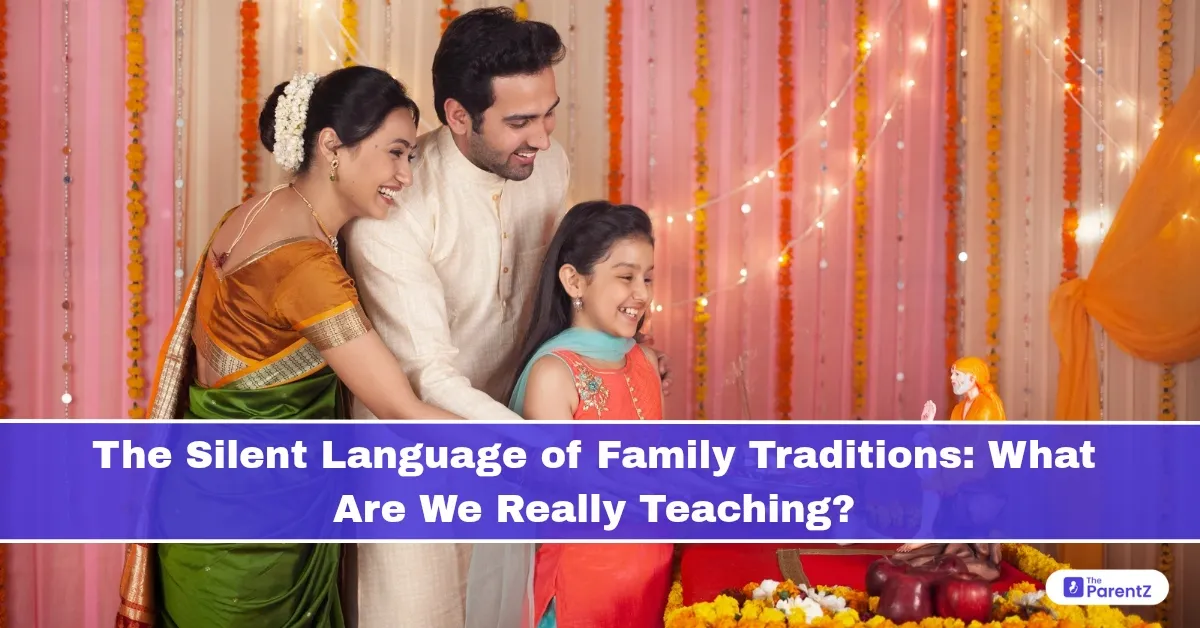Introduction
We often think of family traditions as simple acts—lighting a candle, cooking a holiday meal, gathering for weekend dinners. But beneath the surface, these rituals tell a deeper story. They carry unspoken lessons about who we are, what we value, and how we connect to one another. Whether consciously designed or inherited through generations, traditions shape the emotional landscape of our families in powerful ways.
In this article, we explore how family traditions function as a silent language—conveying love, teaching resilience, and anchoring our children in identity and belonging.
Why Traditions Matter More Than We Think
Traditions do more than mark time. They build a sense of continuity and security in a world that’s constantly changing. For children, especially, these rituals provide rhythm, meaning, and a sense of being part of something bigger than themselves.
Benefits of Family Traditions:
- Emotional stability: Predictable routines offer comfort and reduce anxiety.
- Shared identity: Traditions give children a sense of “this is who we are.”
- Deeper bonds: Participating in rituals creates opportunities for connection and joy.
- Cultural transmission: Traditions carry language, beliefs, food, and customs from one generation to the next.
The Messages Hidden in the Rituals
Every tradition—no matter how small—communicates something.
1. Sunday Dinners
Message: “Family time matters. We make time for each other.”Even if there's tension or distraction during the week, showing up at the table regularly teaches kids that connection is a priority.
2. Celebrating Birthdays
Message: “You are loved. You matter.”Special attention on birthdays reinforces a child’s self-worth and individual identity.
3. Holiday Traditions
Message: “We are part of something bigger.”Religious, cultural, or seasonal celebrations root children in heritage and teach the value of shared history.
4. Bedtime Routines
Message: “You are safe. You can rest.”Consistent bedtime rituals—stories, hugs, songs—send powerful signals of security and trust.
5. Volunteering Together
Message: “Helping others is part of who we are.”Traditions centered around service build empathy and a sense of responsibility.
What Are We Unintentionally Teaching?
Just as traditions can uplift and connect, they can also reinforce problematic patterns if left unexamined.
For Example:
- Perfectionism: A holiday tradition that’s overly rigid or focused on aesthetics may unintentionally teach kids that appearances matter more than presence.
- Exclusion: Traditions that leave out certain family members can create feelings of alienation or favoritism.
- Emotional suppression: Some traditions may discourage open conversation or vulnerability, especially in families where “we don’t talk about feelings.”
It’s important to reflect: Is this tradition serving us, or are we just serving the tradition?
Evolving Traditions with Intention
Families change, and so should traditions. As children grow and dynamics shift, it’s okay—even healthy—to revisit and revise your rituals.
How to Adapt Traditions:
- Involve your children in decision-making.
- Keep the essence, but simplify or modernize.
- Let go of rituals that no longer feel meaningful or inclusive.
Sometimes, creating new traditions—a movie night after a tough week, writing thank-you notes during holidays, or taking a yearly family walk—can be just as powerful as preserving old ones.
Conclusion
Family traditions aren’t just habits or holidays—they are a silent curriculum. Through them, we teach our children what love looks like, how we handle conflict, what we celebrate, and what we stand for. The beauty of tradition lies in its quiet power: without speaking a word, it tells our children, this is where you belong.
So, whether your family gathers for festivals, bedtime stories, or pancakes on Sundays, ask yourself: What are we really saying through this moment? And more importantly, is it what we want them to remember?








Be the first one to comment on this story.